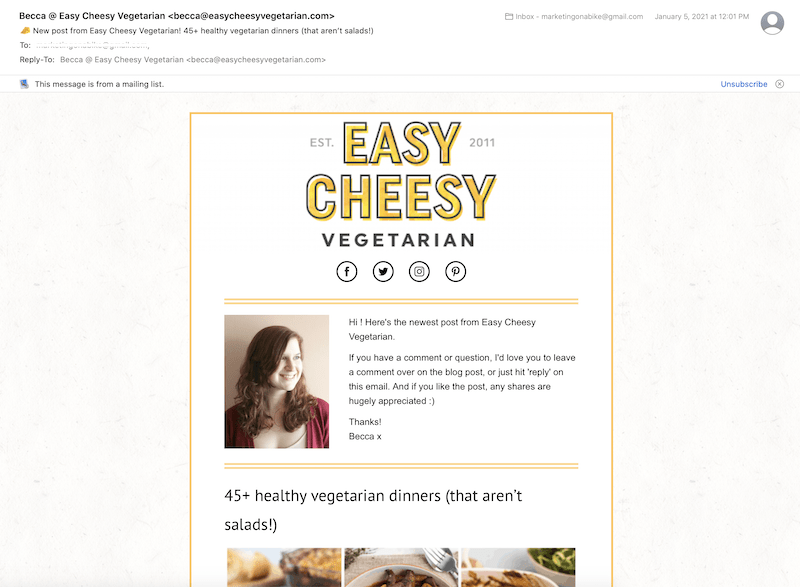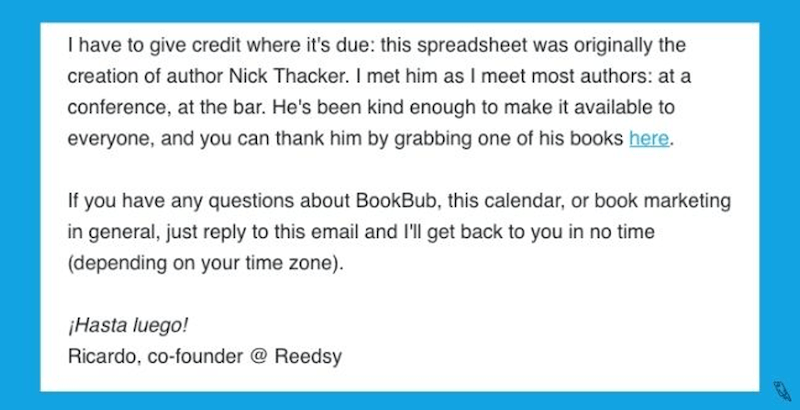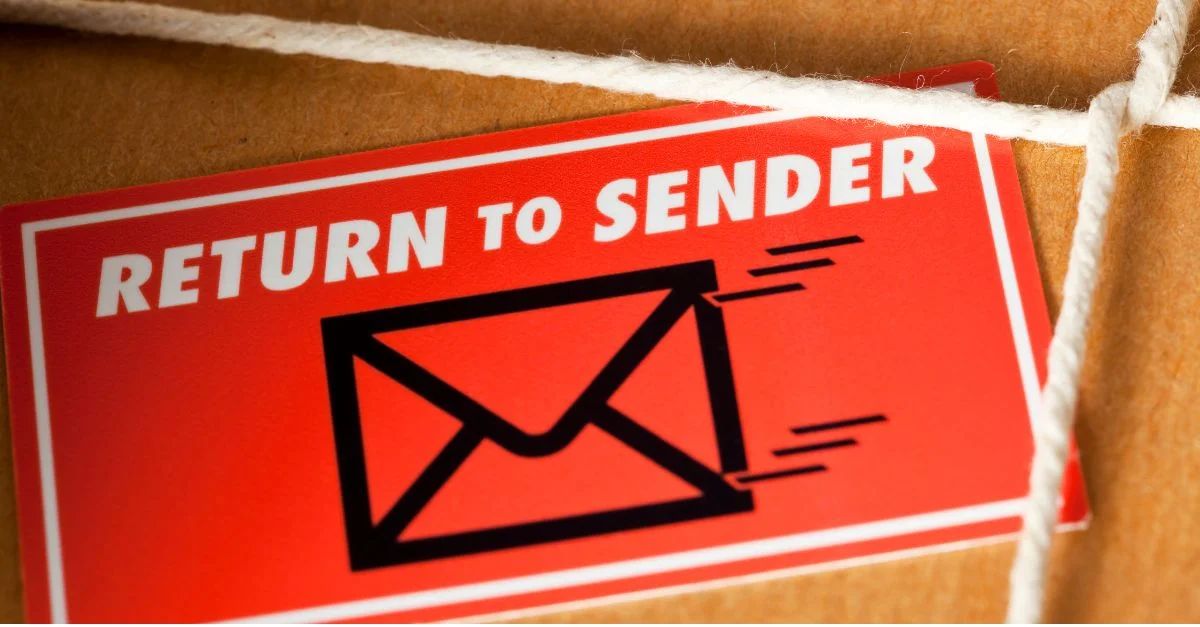
Are you a robot? If not (cue 5-min CAPTCHA asking you to identify traffic cones in a wide variety of weather conditions), you probably don’t expect to be spoken to as if you are one in your inbox. And I can’t say I’ve ever been too enthused to receive emails that read like they were written by a robot, either.
Say what you will about C3PO, but at least his catastrophizing made him stand out in a sea of droids.
Email marketing remains one of the most effective channels in the industry, which is why in this post, I’m going to walk you through how to make the most of it with the proper language, tone, and delivery. Read on to learn nine tips so that you can write emails—even automated ones—with a human touch and win over more customers.
9 strategies for writing more personalized and effective emails
By this point, most people realize that the majority of emails they receive are part of email automation—meaning they’re part of a series of pre-written emails triggered by a certain user action. No one expects to get extremely personalized communications from companies—creepy and needy, truly the best combination—but emails that at least appear to have been written by an actual human with a personality are really not too much to ask.
For email marketing to be effective, you need to respect your reader’s humanity, never losing sight of the fact that you should be writing like a real person. Emails are not ads. The two are marketing cousins that share a common need for excellent, concise copywriting, but emails are a more conversational art. Aside from all the conversion-oriented technicalities you need to worry about with emails (like subject lines and open rates), writing well should remain your top priority.
With that in mind, here are a few tried-and-tested best practices from the Reedsy team (with special thanks to Mayara Benedetti, our in-house email expert):
1. Use the first person
Companies can often be seen as faceless, nebulous organisms. So the most obvious first step to humanizing your voice is to speak in the first person. Own your “I”, even if you’re speaking on behalf of the company, the marketing team, customer service, whatever it is. There’s still a person crafting the emails behind an automation, so highlight that—you don’t have to be the CEO to claim ownership of the “I” pronoun.
2. Use parentheses to indicate spontaneity
My favorite way to highlight that you are, in fact, human, is to use parentheses in your emails. Adding short asides or afterthoughts in brackets just isn’t something a bot would do. It’s a distinctly human thought process, the instinct to add humor or squeeze in another fact. At its core, using parentheses is a friendly impulse, hedged by the knowledge that whatever’s contained within them is not 100% integral to your point, and so made quieter by means of punctuation.
More than that, asides and afterthoughts are always a sign of spontaneity, and immediately give an email a more conversational quality. It’s one of those subtle linguistic touches that completely transform how an email registers subliminally.
3. Avoid alarming levels of enthusiasm
I don’t know how we got here, but a lot of the marketing copy I read seems to be really! Excited! All! The! Time!
The vibe I get from overenthusiastic ecommerce emails.
Hopefully, my point will be self-evident: while communication with emotion is key, sounding like you’re on a manic sugar high is far from ideal. In fact, crazy levels of enthusiasm tend to make your email copy read like a biased ad, in other words, a piece of unreliable, overly optimistic writing from the land of rainbows, butterflies, and never-broken promises. It’s just not convincing, and comes across as insincere, because it is.
To that end, it’s best to stick to realistic and objective claims, limiting your use of exclamation marks.
RELATED: How to Write in Conversational Tone (+30 Awesome Examples)
4. Include humor or emojis
Humor is good, and it’ll make any email stand out. If it comes naturally to you, by all means indulge your inner comic. Though I personally fail to appreciate puns, I feel obliged to note that they’re really popular, and are a fairly reliable source of entertainment for promotional emails.
If, like me, you do not worship at the altar of wordplay, you can always use emojis in a friendly or humorous way—for example, one of my colleagues likes to use the baby chick emoji ( ) or the seedling ( ) whenever she’s addressing newbies or discussing new projects respectively. It’s cute without being overbearing, and unlike our Slack conversations, which are liberally slathered with multiple emojis, she limits herself to a single one.
A final note: humor and emojis can read as weird if you force them. If you’re struggling, it may be better to leave them out altogether—or be prepared for the random 16-year-olds who have ended up subscribed to your list scorning your emoji efforts with “ok boomer” replies.
5. Share a story or a personal experience
Stories are a brilliant way to give your emails a stronger sense of personality. You don’t need to go crazy penning a creative writing masterpiece—email ‘storytelling’ can be as simple as saying how you met a person you’re mentioning. Anything that reminds the reader that the person writing the email is real, and is out there navigating the world, just like them.
If you need an example, this is an extract from Reedsy co-founder Ricardo Fayet’s weekly book marketing newsletter:
6. Stay away from formality
Overly formal language is another way in which emails end up reading like AI-generated text. Emails are not press releases; instead of thinking of your words as a grand announcement from a podium, write your emails as if you’re talking to a friend. Be polite and grammatically correct, of course, but keep it chill. Be more Obama, less Queen Elizabeth.
As a non-native speaker of English, I do want to add that excessive formality is sometimes the result of linguistic anxiety (you really do not want to see the way I used to email my university professors as a nervous fresher). If English isn’t your first language, and your instinct when using it is to always be immaculately polite, impersonal, and formal, do try your best to work some conversational confidence into your writing. It’ll help.
RELATED: How to Write a Follow-Up Email (+12 Templates & Examples)
7. Don’t make assumptions about your reader
Sometimes writers ask themselves rhetorical questions, only to follow with “I’m glad you asked”. This practically guarantees some eye-rolling among your readers. A phrase like this is no great crime, and there’s really no harm done—the reason I’m singling it out is that it’s indicative of a wider tendency to make assumptions about your reader due to the lack of a real-time, engaged audience.
Avoiding assumptions also means staying away from jargon, providing context, and generally being mindful of the fact that your reader might not know what you’re talking about or why you think it matters to them.
8. Sign off with your real name
It is I, your friendly neighborhood email automation.
Perhaps the easiest way to show your reader that your email comes from a real person is to sign your emails (newsletters and automations alike) with your real, actual name. You don’t have to be the face of the company to make your name public, and you can add your job title so that readers know the capacity in which you’re writing to them.
This also means sending your email from your personal address for work, so that your full or first name appears as the sender. It makes sense: aren’t you more likely to open an email if you know it’s been sent to you by a person, as opposed to [email protected]? You can go ahead and A/B test what works best for your audience: a) Full name, or b) First name + “from [company name]”.
Sending from a real address, as opposed to a noreply one, also means that your recipients can actually write back with thoughts or questions. Nothing says ‘bot’ more than a noreply email account, so avoid these at all costs for nurture campaigns, where replies and engagement are exactly what you’re after.
9. Avoid unnecessary rhetoricals (no need to be BFFs)
Now for a final, slightly contrarian point: don’t get carried away by your attempts to be sociable. Yes, sounding like a human is really important, but you also don’t want to be the problematic human at the canteen who won’t let you and your rapidly cooling coffee escape the clutches of their onerous small talk.
Gipsy the cat ain’t got all day.
You don’t actually know the people on the other end of your automations, so a rhetorical “how are you?” or “hope you are all coping well with this pandemic”, while well-meaning, has no place in a marketing automation. (It certainly has a place in one-to-one correspondence, but automations are a different thing.) Instead, respect your readers’ time and get straight to the point. Unlike social interactions, a punchy, if not slightly abrupt beginning can be a good thing—snappy and engaging—it functions much like the ‘hook’ authors use in query letters to literary agents.
Personalize your emails with these tips
You don’t need to implement all of these suggestions, of course. Your emails are your own, and should ideally reflect your voice, so you are free to take these suggestions as a starting point from which to write your emails more mindfully. Let’s recap:
- Use the first person
- Use parentheses to indicate spontaneity
- Avoid alarming levels of enthusiasm
- Include humor or emojis
- Share a story or a personal experience
- Stay away from formality
- Don’t make assumptions about your reader
- Sign off with your real name
- Avoid rhetoricals
As long as you crack open the door to your personality a little, you shouldn’t have much to fear. Some humanity always spills into the room.
About the author
Kleopatra Olympiou is a writer with Reedsy, a marketplace that helps authors publish their books by connecting them with the world’s best publishing professionals. In her spare time, she loves to write fiction and unsubscribe from boring mailing lists.













